- Home
- Rebecca Wells
Ya-Yas in Bloom
Ya-Yas in Bloom Read online
YA-YAS IN BLOOM
A NOVEL
REBECCA WELLS
To my mother and to the memory of my father,
and
To Thomas, whose love holds me up.
Deep in their roots,
All flowers keep the light.
—THEODORE ROETHKE
CONTENTS
Epigragh
A Little Love Gift
Sowing Sisterhood Seeds
The Legacy of Teensy's Pecan
Gopher Girls of God
Hobnobbin' at The Bob
Tending Young Buds
Scenes from My Early Career
Buckaroo
Snow in the South
Show and Tell
Circling the Globe
Pilgrimage
Bruised Plantings
Too Much Wild
Daughter of God
A Bountiful Garden
Safety
A Star's a Seed a Seed's a Star
Acknowledgments
About the Author
Also by Rebecca Wells
Credits
Copyright
About the Publisher
Epigraph
Deep in their roots,
All flowers keep the light.
—THEODORE ROETHKE
A LITTLE LOVE GIFT
Vivi, January 1994
My name is Viviane Abbott Walker. Age sixty-eight, but I can pass for forty-nine. And I do. I altered my driver’s license and kept that gorgeous picture of me when my hair was still thick and I looked like Jessica Lange, and glued it onto every new license I’ve had since 1975. And not one officer has said a word to me about it. I like to think I am Queen of the Ya-Yas, the sisterhood I’ve been part of since I was four. But the fact is that all of us are queens. The Ya-Yas are not a monarchy. We are a Ya-Ya-cracy. Caro, who is still more alive than anyone I know, even though she is yoked to an oxygen tank most of the time because of her emphysema. Teensy, who is probably the most sophisticated of us, although she doesn’t know it, and still cute as a bug. I never know when she’ll be home in Thornton—right smack in the heart of Louisiana, where we were all raised—or in Paris or Istanbul. And Necie, our dear, kind Necie, who is still Madame Chairwoman of every charity in the parish, if not the state.
As Ya-Yas, we’ve grown up, raised our kids—the Petites Ya-Yas—and welcomed our grandchildren, the Très Petites, into this sweet, crazy world. We’ve helped one another stay glued together through most any life event you can imagine. Except we haven’t buried our husbands yet. Well, Caro tried to bury Blaine when she found out he was gay, but decided he and his boyfriend were too much fun and Blaine too good a cook to kill him.
It was the Ya-Yas who brought my oldest child, Sidda, and I back together when we were on the verge of an ugly mother-daughter divorce. They would not stand by and watch it happen, bless their crazy wild hearts. Sidda said it was the three of them and that old scrapbook of mine that I so grandly titled “Divine Secrets” when I was nothing but a kid that helped her understand me. Helped her believe I loved her—even though I was what you might call an “uneven” mother. Sidda has always been melodramatic.
Sidda said she especially loved the snapshots. Snapshots are just snapshots as far as I am concerned. Sidda analyzes everything too much, if you ask me. But this morning, I’m the one who wants to study a photograph. And, of all things, it’s one with my mother in it.
This morning I woke from the most vivid memory. It was not so much a dream as a completely clear picture of my mother, surrounded by flowers. It triggered an image that I just knew I had a photograph of. But I had to have my coffee before beginning the search. Photos in this house are not what you would call organized. You have to be an archaeologist to even form a search team. I’ve always been too busy living to sit around for hours and arrange the photos and snapshots into proper family albums. My life is so full. I might be a card-carrying member of AARP, but I am not retired. Or retiring, for that matter! Hah! I am busy, busy, busy. Work out at the club every single weekday. Bourrée with the Ya-Yas. Cruises with Shep. And spending time in that garden of his. He’s out there so much that in order to see him, I have—for the first time in my life—put on a pair of deerskin gloves and done a very small amount of digging and weeding. He says it will grow on me. I say, What’s wrong with being a garden amateur? Mass every Saturday afternoon. Confession twice a month. Reading everything I can get my hands on (except science fiction, too much like my bad dreams). Playing tennis with Teensy and Chick. I am fit as hell. My constitution is amazing. My liver is in fine shape, to the everlasting shock of my doctors. The most trouble I have is a little arthritis in my hands. I’m going to be like one of those women they find in China who live to be one hundred and forty after smoking and drinking all their lives.
Oh, there is pain in my life, but it is harder to put a name to it. Sometimes I lie in bed and wonder if there was a typhoid booster or dental checkup that I forgot to give Sidda, Little Shep, Lulu, or Baylor. Something I missed and should have done. Sometimes I lie in bed and wish I had just asked the kids what would have made them feel more loved. But I do not dwell, thank you very much. I follow Necie’s words of wisdom: “Just think pretty pink and blue thoughts.”
After one strong cup of Dark Roast Community Coffee, I began scrounging through the hutch drawers where I keep most of our family snapshots. I had to pray to Saint Anthony, Patron Saint of Lost Objects, and he finally helped me find the image I wanted. It was stashed in the back of one of the hutch drawers, slightly wrinkled, but there all the same. One of the things I love about Catholicism is that there is a saint for everything. If Sidda can’t find a saint for something, that girl just makes one up. Even has one she calls Saint Madge of Menstruation. I don’t consider that blasphemous, although there was a time when I would have. Now I just call it creative.
I took the photo and a second cup of coffee out to the window seat in the den, where I can look out on the bayou here at Pecan Grove Plantation. Then I began my meditation.
In the snapshot, my mother wore her wedding ring on her left hand as she held my oldest baby girl’s ankle. I snapped the picture with my Brownie myself. There were three generations of us there that day, even though I wasn’t in the picture. Even though you can’t see me, I’m there. Sidda was barely a year old, and she was being so good. I loved that pink dress. Mother made it for her. I said, “Mother, that fabric must have cost a fortune!” And she said in that martyred tone she always had, “Well, I’d rather spend money on the children than on myself.” To say that dress was lovely would be an understatement. It was made of the finest soft pink cotton, with a perfectly stitched Irish linen white collar, and intricate tiny embroidery down the front. The full skirt gave it a bell look, and the hem hit Sidda just above her ankles. A little long, but Mother believed in clothes that children could “grow into.” The fact that it was a little long made Sidda look like a little princess, not a regular human little baby girl. She looked like a child who would be painted by one of the Old Masters or the French painters who did portraits of prominent families’ children.
Sidda looked like she could not have been born from my body. This was the first time I ever felt that she was not
me: that she was someone else. I didn’t like that feeling. I’m still not totally comfortable with it. That is one of the reasons Sidda and I will always have to be careful with each other. She explained this to me. But then, she has done a million years of therapy and read scads more books on the subject than I have. I do not obsess like that on things that are not happy.
They say redheads shouldn’t wear pink. Ridiculous! My baby girl proved them wrong. Her little curls of red hair made her face glow in that dress.
If I hadn’t been so pregnant with the next child already, I might have taken more time to get to know my oldest daughter with the dolphin forehead. She was gorgeous, but she had that big forehead. I called her my “Einstein Baby.” I knew she would be a genius. I didn’t know in what, but I never doubted for a moment that Siddalee Walker would leave her mark on the world.
Such huge brown eyes that could turn green on you. A perfect little mouth. This was before she fell and scarred her lip slightly, something she expertly disguises with lip liner now that she is grown and beautiful. As a baby, she looked so intense sometimes, that little frown coming across her forehead like stormy weather, like a low front, like a tropical depression. She was definitely my little genius baby, the way she scrutinized everything and everybody. Sometimes I’d say, “Don’t look at me like that,” even though she wasn’t even old enough to speak. I think that child understood what I was saying from the day she was born. When Sidda would look at me like she was trying to figure me out, she would stay so still. It drove me crazy. I couldn’t bear it. I would have to scoop her up and shake her a little, get the whole thing moving, just to break up that intensity.
I loved every one of her ten perfect toes, every one of her ten perfect fingers. I loved the color of her skin. She had the coloring of a true redhead, just like I have the coloring of a true blonde. She had that white milky skin. Could never take the sun. I protected her from the sun from the beginning. Even before they knew what horrible things sunlight can do to us. I dressed her in caps with little brims that shielded her from the sun. In fact on the very day that photo was taken, I had only taken off her hat long enough for the photo to be taken, then I put it right back on. Mothers nowadays don’t seem to have time for hats. And look at Sidda now: a successful theater director, happily married. She looks ten years younger than she is. Her complexion is simply divine, and it’s because of me.
In the photograph Mother was bending over, holding Sidda. She wore her nice starched navy blue linen dress that day. She had actually done something with her hair so she did not look like a maid. The newly opened sycamore leaves were still yellowish and translucent and shimmering with the sun. The spring grass was glowing green, and there must have been a hundred different colored pansy faces staring back at us from the flower beds. It was a perfect April day. Mother had asked me to bring Sidda over, and then she just presented us with the dress. It wasn’t a birthday present. It wasn’t an Easter dress. It was just something she got in her mind to do. A little love gift. “I saw something like it in a magazine and knew I could make it myself. I did not want any other little girl in the parish to have it but Sidda, so I just changed it slightly. Do you like it?”
“Mother,” I said, “it is simply gorgeous. It’s pretty as a birthday cake.”
We were in Mama’s big kitchen with the hearth and the rocking chairs, ten months after Father was killed in a car accident while driving home from his law office. I had the feeling that my mother was coming out of mourning in some way by making that dress for Sidda. If she were a different kind of woman, she might have made herself a beautiful pink dress, but she made it for her first granddaughter.
We put Sidda on the round oak table and carefully pulled that dress over her head. Mother had gotten brand-new dressy socks with ruffles and a pair of the softest white little leather shoes you ever felt. I put them to my cheek just to feel them. I smelled that pure leather and the soft pink satin inside the slipper, and I thought of my mother and how she loved fairy tales, how she believed in fairies. I never listened to her about it, but I said: “Mother, fairies could have made these shoes!”
That made her smile.
“Maybe they did,” she said. The happiness in her eyes made my heart hurt.
It was utterly unlike Mother to do this. When I think about it now, I am still touched. Those years are all a blur to me. That’s why this image, so clear, is important. While I was having five kids in three years and eight months—including Sidda’s twin, the baby I lost—my hormones were doing the craziest tango in town. It has taken me the rest of my life to recover from having those kids so close together. One after the other after the other after the other. No break in between. Dirty diapers, no sleep, and a husband who basically lived at the duck camp.
Mother’s yard in early April, with the yellow forsythia and the brilliant magenta azaleas in full bloom, was a beautiful sight. Mother was an excellent gardener, but the gardening genes did not get passed on to me. We walked through Mother’s yard with the wild daffodils in clusters everywhere, and after looking at several possible places to take the picture, we decided on that old concrete wall back by the barn. Right at the spot where the crack ran up the side of the wall. There was a Carolina jasmine vine intertwined so completely with a honeysuckle vine that you couldn’t tell where one began and the other left off. And the leaves were already so thick that you could hardly see the crack. The three of us had no business being so dressed up—middle of the week, no holiday involved—except for that pink dress that Mother made for Sidda. It gave off magic. The minute I had seen it when I lifted it out of the tissue paper in the box that had been wrapped in pink, I knew I had to change clothes, too. I drove home and put on my best dress, a persimmon-colored linen number with a stylish tunic top over a straight skirt with the belly pegged out. Smartest maternity outfit I had ever seen. I had it copied again and again for all of my pregnancies in different shades of linen and silk. Black, white, beige, and persimmon. You cannot go wrong with those four colors. Especially when the alternative then for pregnant women was these ridiculous sweet-looking things that made you look like a little girl who just happened to have swallowed a basketball. I would die before I’d look like a whale in a muumuu just because I was carrying a baby. These days, pregnant women wear dresses that are stylish and show off their swollen breasts and bellies like they are goddesses. They are sexy! That wasn’t the case when I had my babies in the 1950s, but I did my damnedest. I looked good that day.
That picture was about eleven on that fresh morning. Mother and I both wanted to take the photograph to show off that dress, but the day just seemed to call out to be recorded, too. Like the sun and the sky and the trees and the little violets scattered throughout the lawn and the wisteria in bloom were singing out: “Look at me! Remember me!”
And I do remember. April, 1954. I was twenty-eight years old; my mother was fifty-four.
When I took the picture, I thought: Please, Mother, relax and smile. Just for a minute, please don’t look like you’re working so hard, like it’s such a damn strain. For once just relax like you are one of your precious flowers in bloom. Sidda will be okay. She’s a good baby. Enjoy yourself, for goodness sakes. But I didn’t say anything except, “Smile!”
You can’t see that Sidda was a twin in the picture. There’s nothing in the picture that even acknowledges it. To look at that picture, you would think that no one died. You would think we were happy all the time: my mother, my baby, and me. The leaves on the trees are full. I’m surprised they are so full. Maybe it was later in the spring, maybe I’m wrong. Just standing there, those trees in the sun seem happy to be a green background for the pink dress and that little bit of red hair on a child who would grow up to become the accomplished, happy woman she is today. Mother’s wedding ring is catching some light and the veins in her hands are popping up a little, but she’s got her hand in such a way on Sidda’s tiny, bitty ankle that it looks graceful. Her hand is so feminine. It’s funny; I never thou
ght of my mother as feminine. But there it is in her hand, right there in the picture. So much femininity. Not the kind that comes from frill and fuss, but the kind you notice in a woman’s hands who has lived and worked and been betrayed and tried to love in spite of it all. The kind of femininity you notice blooming in your baby girl. The kind that keeps you going—like with the Ya-Yas, my girlfriends of umpteen years. The kind of deep feminine you wish you carried inside all the time.
At that point, Mother had gotten on my nerves a lot. Like for approximately twenty-eight years. But on that day it was good to be with her. It was just the three of us. We were an exclusive little mother-daughter club that no one but Mother, Siddalee, and I could join. We had little cucumber sandwiches afterward, I remember, with coffee and little sugar cookies that Mama had made with pink icing the shape of animals on the front. She could always bake. Her kitchen always smelled like oatmeal, fresh bread, and peanut butter. It was a tonic just to sit in and smell her kitchen. I did it a lot, especially right after I got married. For six months after I got married, Mother cooked every evening meal for Shep and me. Until Shep discovered that I was doing this and trying to pass it off as my own cooking.
He said, “This has got to stop. I’ll teach you to cook.” And my husband did teach me how to cook. Damn well. How to prepare fish, meat, all kinds of Louisiana wild game, flavors and spices. I learned, and I did it. I had help from Willetta, our maid, I will never say I didn’t, but I had food on the table for my four kids no matter what was going on.

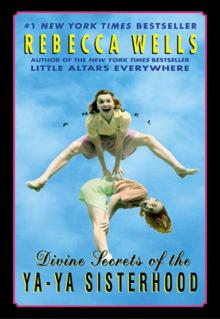 Divine Secrets of the Ya-Ya Sisterhood
Divine Secrets of the Ya-Ya Sisterhood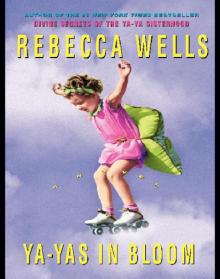 Ya-Yas in Bloom: A Novel
Ya-Yas in Bloom: A Novel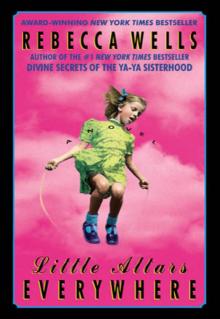 Little Altars Everywhere
Little Altars Everywhere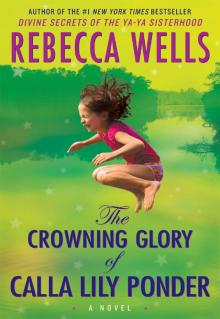 The Crowning Glory of Calla Lily Ponder
The Crowning Glory of Calla Lily Ponder The Crowning Glory of Calla Lily Ponder: A Novel
The Crowning Glory of Calla Lily Ponder: A Novel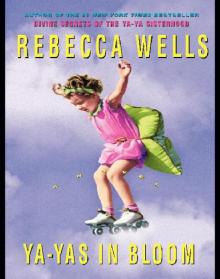 Ya-Yas in Bloom
Ya-Yas in Bloom